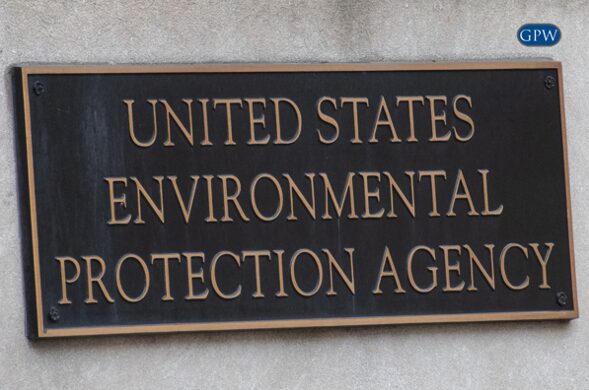Asbestos Exposure – Can We Really Control It?
Asbestos is typically thought of as a substance that is no longer in use anymore because it is a well-known carcinogen. Asbestos is fire resistant, strong, cheap, abundant, and absorbs sound. It is no wonder it rose to popularity throughout the 20th century since it was so versatile. While asbestos is solid rock, it is unique in that it is made up of tiny fibers that are able to be extracted – making its use even more widespread.
Not many people know that asbestos was actually used for centuries, dating back to 2400 B.C. Historians found evidence of people using it to make cooking utensils and wove it into fabrics. Asbestos turns white when burned, so it was common practice in those days to throw dirty cloths into a fire to “clean” them. The cloths would not burn and turned white, making them appear as good as new.
Asbestos didn’t make an appearance in American industry until centuries later, in 1858 when the Johns Company began using it as insulation at the Ward’s Hill Quarry in New York. Advertised as perfectly safe because of its heat resistance, asbestos consumption was on the rise in the United States, and between 1937 and 1942 world production increased by 60%. Its widespread use became a staple in common products such as cement, roofing, insulation, heat and acid resistant gaskets, filters, and brake pads.
Asbestos continued to be mined and mass produced until about the 1970s when it was revealed that many companies knew about the health risks of asbestos and declined to notify their employees or others who used the material in their jobs. As asbestos use because more and more regulated, it stopped being used in many household products as well as the construction, industrial, and electrical industries. Unfortunately, because asbestos was one of the most popular products used in the world for decades, there are many products, buildings, and structures that still contain the carcinogen. The hazardous material that plagued workers throughout the 20th century continues to plague citizens who are generally unaware of asbestos exposure. Many might think that they can control asbestos exposure if they are able to identify it and safely remove it from their property. However, there are instances that are beyond our control that might cause individuals to be exposed to asbestos in ways they could not even fathom.
The train crash in late September 2016 in Hoboken, New Jersey threw the dangers of asbestos back in the news after what seemed like decades of silence since it became regulated and controlled. Investigators and crews on the scene of the crash have been trying to recover a second black box to determine the cause of the deadly accident. However, they have been unsuccessful in its retrieval not only because the structural damage of the station is hazardous, but because there are dangerous levels of asbestos – forcing investigators to leave. The Hoboken train station is over 100 years old – built at a time when asbestos was regularly used. Asbestos has caused the investigation to come to a halt; its dangers too high to risk any after effects.
The September 11 attacks that devastated the United States in 2001 unearthed new terrors that continues to plague the population some 15 years later. After the towers fell, the dust and debris that coated Manhattan was inhaled by first responders and survivors. Little did they know that the dust-filled air was contaminated with all sorts of carcinogenic particles such as asbestos. “World Trade Center Cough” was a term coined for a group of fire fighters and first responders that developed pulmonary complications following the national tragedy. While some studies have proven to be inconclusive about the relationship between the debris from the World Trade Center and cancer, it is also important to remember the long latency period for asbestos-related illnesses to develop. Mesothelioma has a minimum of an 11-year latency period and an average latency of 40 years, meaning that the disease develops on average 40 years after a person’s first exposure. Even though 15 years have passed since that fateful day, the repercussions are not on the decline.
The issue of asbestos in our school systems is a great concern because many schools that were built before 1980 contain asbestos. As noted earlier, asbestos was cheap, easy to install, and acted as an insulator and fire retardant – a perfect combination of characteristics for buildings that needed to be built all over the country and needed to be safe. Finding asbestos material in school buildings today is an ongoing event that involves immediately shutting down the school and property; inconveniencing thousands of students and parents as asbestos-abatement takes place. Even though protocols for asbestos abatement are strict, the fact remains that asbestos fibers could be contaminating schools without anyone’s knowledge for many years. This potentially puts students, faculty, staff, and parents at risk.
Asbestos has been heavily regulated throughout the years in the United States. It can no longer be mined and importation has been on a steady decline over the past few years as companies refuse to use the product. As a result, it is easy to forget the dangers of asbestos, or to be able to properly identify it. The events of 9/11, the Hoboken train crash, and other tragic incidents should serve as a reminder that the dangers of asbestos are very real and will continue to be real for years to come. While individuals can do their best to make sure they live in an asbestos free environment, the fact of the matter remains that because asbestos was used so regularly, the chances of being exposed without any knowledge of that fact are a very real danger.
If you are suffering from an asbestos-related illness and are unsure if you have ever been exposed, contact the attorneys at Goldberg, Persky & White, P.C. (GPW). We have been involved in asbestos lawsuits since the 1970s, when cases were first coming to trial. Because of GPW’s involvement in asbestos litigation from the beginning, we have a clear understanding of what is required to succeed in asbestos and mesothelioma lawsuits. The statute of limitations for filing a lawsuit vary from state to state so don’t let time limit your rights. Contact us immediately at 1-800-Complex or by filling out the contact form below for a free no obligation consultation.
Sources:
Aria Bendix, “14 Years Later, Here’s What We Know About 9/11 and Cancer,” The Atlantic City Lab (September 10, 2015). [Link]
Tom Costello & Elisha Feldstadt, “Hoboken Crash: Feds Can’t Reach Black Box, Camera Because of Asbestos, Sources Say,” NBC News (October 1, 2016). [Link]
Mesothelioma Help “Asbestos Timeline.” [Link]



